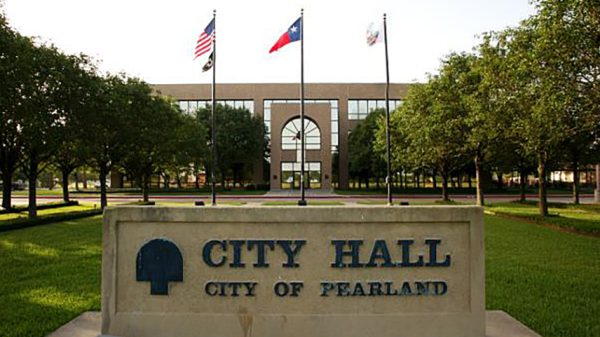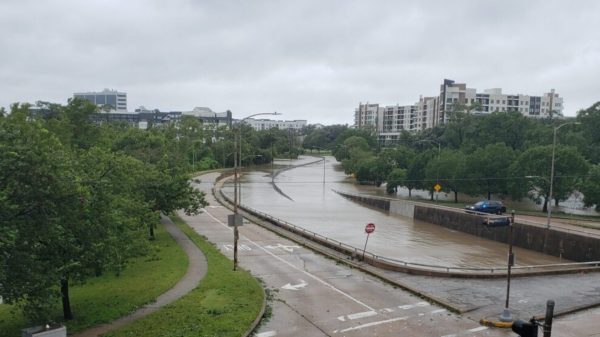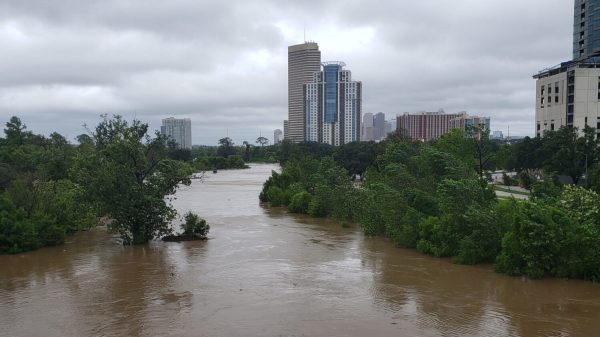
Kilauea Volcano, Hawaii
Walk through Kilauea’s territory and you’ll see every stage of how Hawaii was built: fresh black lava steaming as it cools, slightly older flows sprouting their first ferns, and ancient flows now covered in thick rainforest. The catch is – Kilauea hasn’t stopped doing it.
Native Hawaiians also call this place the home of Pele, goddess of fire – and watching lava flow into the Pacific will instantly make you understand why.

This is the Fiery Home of Pele
Pele is the Hawaiian goddess of fire and volcanoes and revered as the divine creator of the Hawaiian Islands.
Every year, people leave over 10,000 offerings at Pele’s shrine at Halemaʻumaʻu crater. Hawaiians tell stories about Pele’s seven siblings, including her sister Nāmaka, the sea goddess.
One famous legend from around 1500 CE tells about Pele falling in love with Lohiʻau, a chief from Kauaʻi. You can see over 300 pieces of Pele-inspired artwork at the Volcano Art Center.
Don’t take any rocks home as souvenirs. Since 2017, there’ve been 89 documented cases of returned items, often with letters explaining the bad luck that followed.

This volcano keeps adding new land to Hawaii
Since 1983, lava from Kilauea has buried 55 miles of highway. In just four weeks during December 2020, it added 41 new acres to Hawaii. You can find Earth’s newest land at Kapoho Bay, where lava pushed the coastline 1.2 miles further into the Pacific in 2018.
From the Hōlei Sea Arch viewpoint, 19 miles from the visitor center, you can watch this land-building process happen. When these lava deltas meet the ocean floor, they can be as thick as 130 feet.

You’re looking at two volcanoes when you visit Kilauea
About 100,000 years ago, Kilauea split away from Mauna Loa. Their magma systems separate about 37 miles below the surface. Scientists confirmed this in 2003 by studying lava samples from both volcanoes.
You can see both volcanoes at once from Mauna Kea’s 13,678-foot summit. Kilauea covers 14% of the Big Island, while Mauna Loa takes up 51%. They’re only 25 miles apart from summit to summit.
Though connected at the base, they’re completely separate volcanoes with different personalities.

The longest eruption here lasted over 35 years straight
From 1983 to 2018, the Pu’u O’o eruption covered 55 square miles of land with lava. On June 30, 1984, lava fountains shot up 1,540 feet – the highest ever seen at this site.
In total, it produced 1.2 cubic miles of lava. You can still see what’s left of Pu’u O’o crater, which grew to 835 feet tall before partly collapsing in 2018.
This marathon eruption destroyed 215 buildings and buried 9 miles of highway under lava as deep as 115 feet.

Vog from Kilauea affects air across all the Hawaiian islands
On bad days, vog from Kilauea can cut visibility down to just 0.2 miles in nearby towns. During active periods, it pumps out 2,000-8,000 tons of sulfur dioxide every day. There are 18 air quality monitors around the island tracking these emissions.
Before visiting, you can check real-time vog conditions on the University of Hawaii’s website. During the big 2018 eruption, some areas had sulfur dioxide levels 15,000 times higher than what’s safe. The vog can travel up to 186 miles from the volcano.

One of the world’s few persistent lava lakes bubbles here
The current lava lake formed in December 2020 and got as deep as 751 feet. It covers about 62 acres – that’s like 47 football fields put together. Scientists watch it using special cameras that can detect tiny 0.1°F temperature changes.
You can see the lake glow from Keanakākoʻi Overlook, just 1.1 miles from where you’ll park. The lake’s surface moves at 1-3 feet per second as hot and cool lava circulates. At night, its glow lights up clouds as high as 5,000 feet above.

Everything changed here after the massive 2018 eruption
During the 2018 eruption, blocks weighing up to 12 tons were thrown more than half a mile. Lava from the Lower East Rift Zone traveled 8 miles to reach the ocean, moving as fast as 17 mph. Now the summit crater is 1.5 miles wide and 1,640 feet deep.
You can see this completely transformed landscape from the Steam Vents overlook, where ground temperatures hit 200°F. Within just 30 days, the eruption caused about 60,000 earthquakes, including a magnitude 6.9 quake on May 4, 2018 – Hawaii’s biggest since 1975.

A massive plumbing system runs 60 miles deep under your feet
Scientists have found a magma chamber about 2.5 miles wide under the summit. Magma flows through underground passages at 2-3 feet per second. Right before the December 2020 eruption, there were 238 earthquakes in just 24 hours.
You can see proof of this plumbing system at the 62 steam vents around the summit area. Special GPS tools can detect the ground swelling up to 2 inches before eruptions happen. The East Rift Zone stretches 78 miles in total – 20 miles on land and another 58 miles underwater.

The December 2023 eruption poured 600 million gallons of lava into the crater
The December 2023 eruption started at exactly 3:15 PM HST and ended on Christmas Day. Lava fountains reached 82 feet high, covering 370 acres of the crater floor. It happened after 24 hours of intense activity with 230 recorded earthquakes.
You can watch time-lapse videos of this eruption at the Jaggar Museum’s digital display. The lava came out at 2,120°F and flowed at more than 3 million cubic feet per hour. Scientists detected magma moving around 10 days before anyone could see signs of the eruption.

Lightning here strikes at temperatures of 54,000°F
During the 2018 eruption, scientists counted 1,200 lightning strikes in a single day. These volcanic lightning bolts can stretch 3 miles long – that’s five times longer than normal lightning. They only happen when ash clouds get higher than 3,000 feet.
You can safely watch these light shows from the Volcano House hotel, 1.2 miles from the crater rim. The electrical bursts create radio signals that let researchers track eruption strength from 62 miles away. Most lightning happens in the first 30 minutes of big eruptions.

Lava bench collapses have killed 23 people since 1990
The biggest bench collapse happened on April 19, 1993, when 23 acres of new land fell into the ocean. These unstable formations can stick out up to 330 feet from the solid coastline. You’ll see warning signs posted 1,000 feet from active ocean entries.
For a safe view, head to the viewing area at the end of Chain of Craters Road, 23 miles from the visitor center. Most benches collapse within 2-3 months of forming. When they do, explosions can throw lava bombs weighing up to 110 pounds more than 300 feet inland.

Lava tubes stretch for 25 miles beneath where you’re standing
Kazumura Cave, formed by Kilauea, is the world’s longest lava tube at 40.7 miles. Some tubes are 75 feet wide and go down 3,614 feet below the surface. They formed 400-600 years ago during long eruptions.
You can walk through the Thurston Lava Tube, which is 600 feet long with ceilings up to 20 feet high. Scientists have found 209 different lava tube systems on the volcano.
Inside these tubes live special heat-resistant microbes – 16 species aren’t found anywhere else on Earth.

Visiting Kilauea Volcano in 2025
Hawaii Volcanoes National Park is open 24/7 all year, just 30 miles southwest of Hilo.
It costs $30 per vehicle for a 7-day pass. The Kilauea Visitor Center is open 9am-5pm daily, with 12 ranger-led programs every week. You’ll find 23 different viewing areas for volcanic activity.
There are 150 miles of hiking trails throughout the park. If you want to stay overnight, the Volcano House hotel has 33 rooms with crater views starting at $280 per night.
For the best nighttime viewing, head to Keanakākoʻi Overlook between 7pm-10pm – it’s just 1.1 miles from the parking area.
The post Hawaii Grows Larger Every Day Thanks to This Volcano, Home to the Goddess of Fire appeared first on When In Your State.




![Tyson Foods Plant [Photo: Food Manufacturing]](https://southarkansassun.com/wp-content/uploads/2023/08/iStock_1185520857__1_.5e441daa51cca-600x337.jpg)







![Silverado Senior Living Management Inc. [Photo: Los Angeles Times]](https://southarkansassun.com/wp-content/uploads/2023/10/download-6-4-600x337.jpg)

![China's Wuhan Institute of Virology [Photo: Nature]](https://southarkansassun.com/wp-content/uploads/2023/09/d41586-021-01529-3_19239608-600x337.jpg)
















